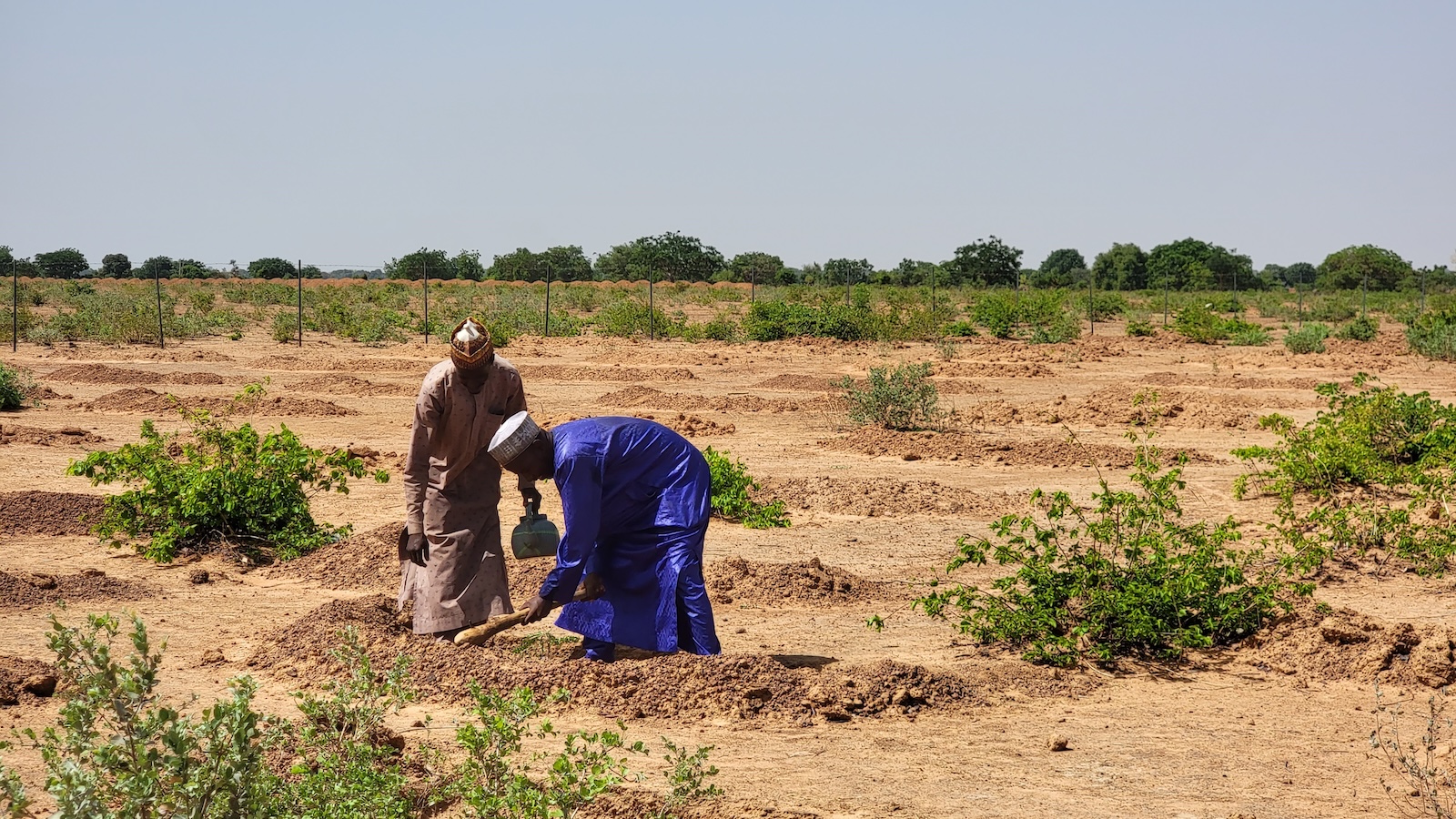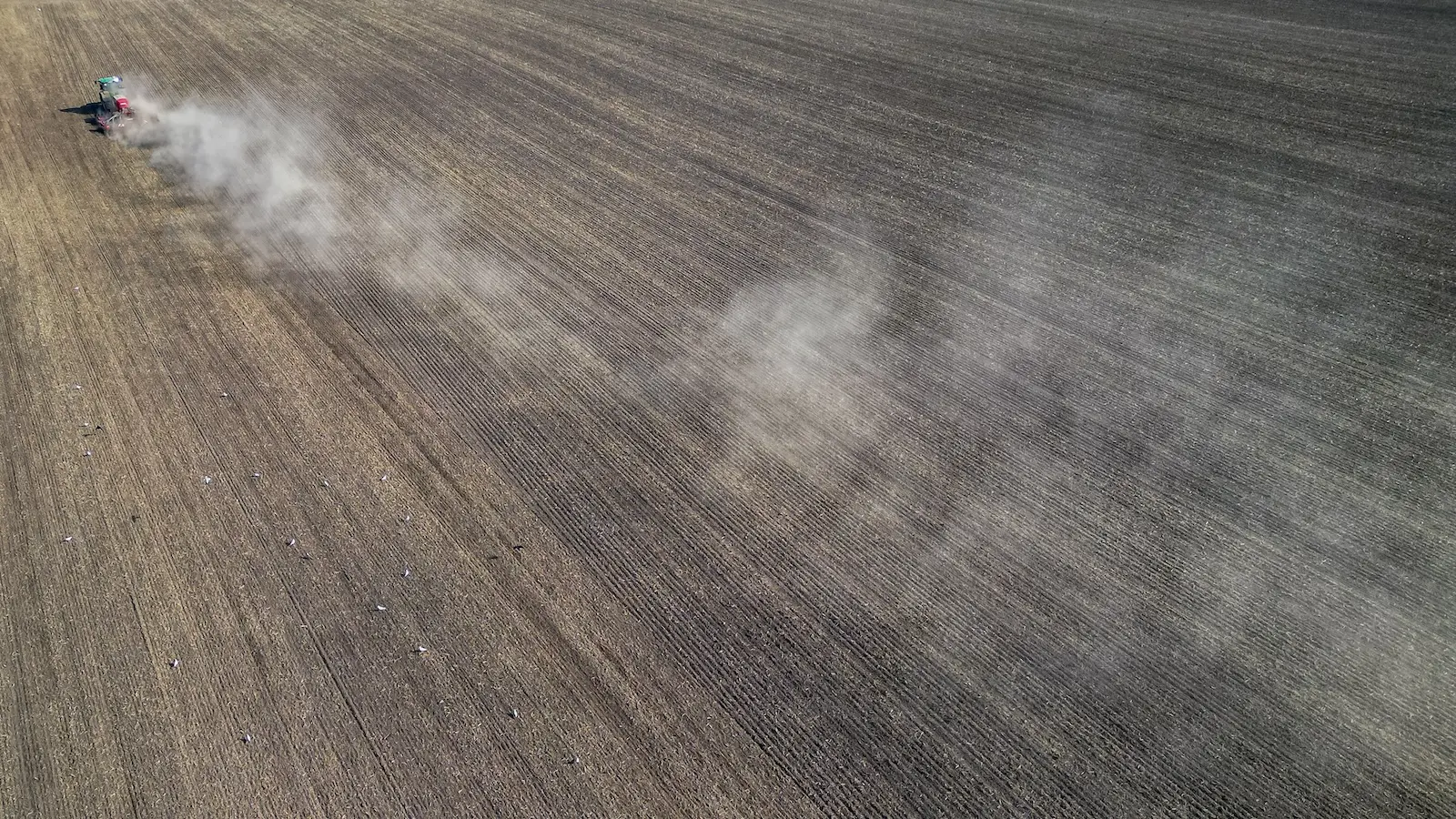World
Three-quarters of the world’s land is drying out, ‘redefining life on Earth’

As Earth grows warmer, its ground is becoming drier and saltier, with profound consequences for the planet’s 8 billion inhabitants — nearly a third of whom already live in places where water is increasingly scarce and the ability to raise crops and livestock is increasingly difficult.
Climate change is accelerating this trend. New research has found global warming has made 77 percent of the Earth’s land drier over the past three decades while rapidly increasing the proportion of excessively salty soils.
Drylands, or arid areas where water is hard to come by, now make up more than 40 percent of the planet (excluding Antarctica), a likely permanent consequence of climate change, according to a landmark report by the United Nations Convention to Combat Desertification, or UNCCD. Another new analysis, by the Food and Agriculture Organization of the United Nations, or FAO, found that roughly 10 percent of the world’s soils are affected by excess salt, with another 2.5 billion acres at risk.
These interwoven trends threaten agricultural productivity, biodiversity, and ecosystem health while exacerbating food and water insecurity. Together, the two reports sound an urgent alarm: Unless the world curbs emissions, these shifts will continue, with grave implications.
“Without concerted efforts, billions face a future marked by hunger, displacement, and economic decline,” said Nichole Barger, an aridlands ecologist who works with the UNCCD.
Some 7.6 percent of the planet’s land was remade by climate change between 1990 and 2020, with most of the impacted areas shifting from humid landscapes to drylands — defined as an area where 90 percent of rainfall evaporates before reaching the ground. Together, they cover a geographic expanse larger than Canada, researchers found, and in 2020 were home to about 30 percent of the world’s population. That’s a jump of more than 7 percent in recent decades. Unless the world sharply limits emissions, that proportion could more than double by the end of the century. By that point, more than two-thirds of land worldwide, with the exception of Greenland and Antarctica, is expected to store less water.
These changes are not limited to regions already considered dry, or expected to experience desertification. When modeling global high-emissions scenarios, the researchers found similar changes could occur in the Midwest, central Mexico, and the Mediterranean, to name three examples. The researchers have no expectation that this trend will reverse.
What Hannah Waterhouse, a soil and water scientist at the University of California, Santa Cruz, finds “important, and unnerving to emphasize” is that this expansion occurred under conditions that aren’t nearly as hot as what’s to come. That suggests the problem will only escalate and, as food and water grow more scarce, usher in issues like widespread conflict, she said.
“We can look to current geopolitical and ecological events that are playing out currently to understand what we can expect in the future,” Waterhouse said. “Think of what is occurring in Sudan right now, where climate change is exacerbating resource scarcity, which is interacting in governance and geopolitics in violent outcomes for civilians.”
Aridity is not to be confused with drought. Drought is best described as a sudden and startling, but temporary, water shortage often caused by low precipitation, high temperatures, little humidity, and unusual wind patterns. Arid regions, on the other hand, experience persistent, long-term climatic conditions in which evaporation exceeds rainfall, creating conditions in which it can be difficult to sustain life. It is much more subtle than a drought, but no less significant.
“Droughts end,” Ibrahim Thiaw, executive secretary of the UNCCD, said in a statement. “When an area’s climate becomes drier, however, the ability to return to previous conditions is lost. The drier climates now affecting vast lands across the globe will not return to how they were, and this change is redefining life on Earth.”
Expanding drylands are widely considered the biggest contributor to the degradation of Earth’s agricultural systems and difficulty producing enough food. Such conditions also have been linked to loss of gross domestic product, large-scale migration, and adverse health impacts and rising mortality. They intensify wildfires, sand storms, and dust storms while degrading ecosystems. They also promote erosion and the salinization of water and soil.
Climate change is already hampering food production, leaving one in 11 people worldwide hungry last year, and the research suggests the problem will intensify, particularly in much of Africa, the Middle East, and South Asia. Under the business-as-usual emissions scenario, sub-Saharan Africa could lose as much as 22 percent of its current crop production capacity by 2050. The production of staple food crops grown in regions highly susceptible to aridity, such as soybeans, wheat, and rice, could plummet worldwide as well.

Rapid expansion of the world’s drylands is “100 percent interconnected” with the coinciding surge in saltier soils, said Maria Konyushkova, a soil scientist at the Food and Agriculture Organization and lead author of the report the U.N. agency released December 11. The more arid an area is, the less freshwater is available. That requires farmers to rely upon brackish water, increasing soil salinity.
While water-soluble salt is a component of all soils, too much of it impairs plants’ water absorption, effectively stealing moisture from them and suppressing their growth. High salinity also changes soil structure, making it more prone to erosion. All of this diminishes soil fertility, and could lead to yield losses as high as 70 percent for crops like rice and beans in the countries most impacted, the researchers found. Roughly 10 percent of the world’s irrigated cropland, and a similar proportion of its rain-fed cropland, already has been impacted by this dire trend.
As it stands, 10 countries, including China, Russia, and the United States, account for 70 percent of the planet’s salt-affected soils. This costs the global agriculture sector at least $27 billion every year. If the world continues to warm at its current rate, past research has estimated that more than 50 percent of the world’s cropland would be similarly impacted by 2050, exacerbating the declining yields that are already driving rising hunger rates.
Where to go from here was the central topic of UNCCD COP16 last month, as representatives of nearly 200 nations gathered in Riyadh, Saudi Arabia, to discuss land degradation, desertification, and drought. “We depend on land for our survival,” U.N. Secretary-General António Guterres said at the conference. “Yet we treat it like dirt.”
Nature-based solutions like agroecology are among the slate of locally-deployed mitigation and adaptation tactics the two reports suggest, alongside improved crop and water management, technological solutions, and the development of water-efficient and salt-resistant varieties of crops.
Big-dollar investments are being touted as solutions, too. Previous UNCCD reports found that halting the planet’s rate of land degradation, which they suggest could lose the global economy $23 trillion by 2050, would cost roughly $4.6 trillion. The agency told negotiators at the summit that at least $2.6 trillion for restoration and resilience purposes is needed by 2030.
By the time the summit concluded, just over $12 billion had been pledged to tackle the issue across 80 vulnerable countries, while negotiators departed having failed to agree on a legally binding protocol for action.
Waterhouse has doubts about some proposals highlighted in the research she considers “top-down technocratic solutions.” The Great Green Wall, a multibillion-dollar initiative to plant trees to combat desertification in the Sahel region of Africa, is one example. The effort, launched in 2007, has drawn criticism for exacerbating water scarcity and biodiversity loss.
Konyushkova considers the two reports an urgent call for governments worldwide to prioritize investing in resilience efforts to manage what is clearly becoming a crisis. “All the trends show that the freshwater resources will be depleting … but we have so many approaches to adapt,” she said. “We just need to start doing it right now, because it’s already here. Even if governments don’t always understand, it’s already here, and deteriorating.”









